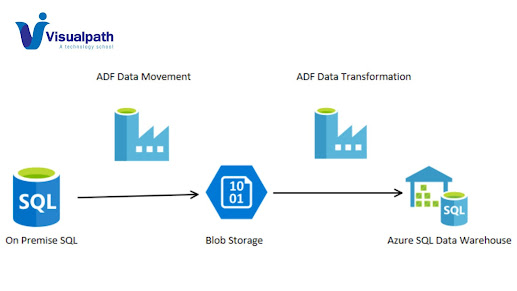Azure Databricks Connectivity with Power BI Cloud
Azure Databricks can be connected to Power BI Cloud to leverage the capabilities of both platforms for data processing, analysis, and visualization. - Azure Databricks Training
Here are the general steps to establish connectivity
between Azure Databricks and Power BI Cloud:
1. Set up Azure Databricks:
- Make sure you have an Azure Databricks
workspace provisioned in your Azure subscription.
- Create a cluster within Databricks to
process your data.
2. Configure Databricks JDBC/ODBC Endpoints:
- Open your Azure Databricks workspace.
- Go to the "Clusters" tab and
select your cluster.
- Under the "Advanced Options,"
enable JDBC/ODBC.
3. Get JDBC/ODBC Connection Information:
- Note down the JDBC or ODBC connection
details provided in the Databricks workspace. This includes the JDBC/ODBC URL,
username, and password. - Azure
Data Engineering Training in Ameerpet
4. Power BI Desktop:
- Open Power BI Desktop.
5. Get Data:
- In Power BI Desktop, go to the "Home"
tab and select "Get Data."
6. Choose Databricks Connector:
- In the "Get Data" window, select
"More..." to open the Get Data window.
- Search for "Databricks" and select
the appropriate Databricks connector.
7. Enter Connection Details:
- Enter the JDBC or ODBC connection details
obtained from the Databricks workspace.
- Provide the necessary authentication
details. - Azure
Data Engineering Training
8. Access Data:
- After successful connection, you can access
tables, views, or custom queries in Azure Databricks from Power BI.
9. Load Data into Power BI:
- Once connected, you can preview and select
the data you want to import into Power BI.
10. Create Visualizations:
- Use Power BI to create visualizations,
reports, and dashboards based on the data from Azure Databricks.
11. Refresh Data:
- Set up data refresh schedules in Power BI
Service to keep your reports up to date.
Additional Considerations:
- Ensure that the Databricks
cluster firewall settings allow connectivity from the Power BI service.
- The Databricks JDBC/ODBC connection
may require specific libraries or drivers; make sure to install them if needed.
Keep in mind that the exact steps
and options might vary based on updates to Azure Databricks, Power BI, or
related components. Always refer to the official documentation for the most
accurate and up-to-date information. - Microsoft
Azure Online Data Engineering Training
Visualpath is the Leading and Best Institute for learning Azure Data Engineering Training. We provide Azure Databricks Training, you will get the best course at an affordable cost.
Attend Free Demo Call on - +91-9989971070.
Visit Our
Blog: https://azuredatabricksonlinetraining.blogspot.com/
Visit: https://www.visualpath.in/azure-data-engineering-with-databricks-and-powerbi-training.html

.jpg)


Comments
Post a Comment